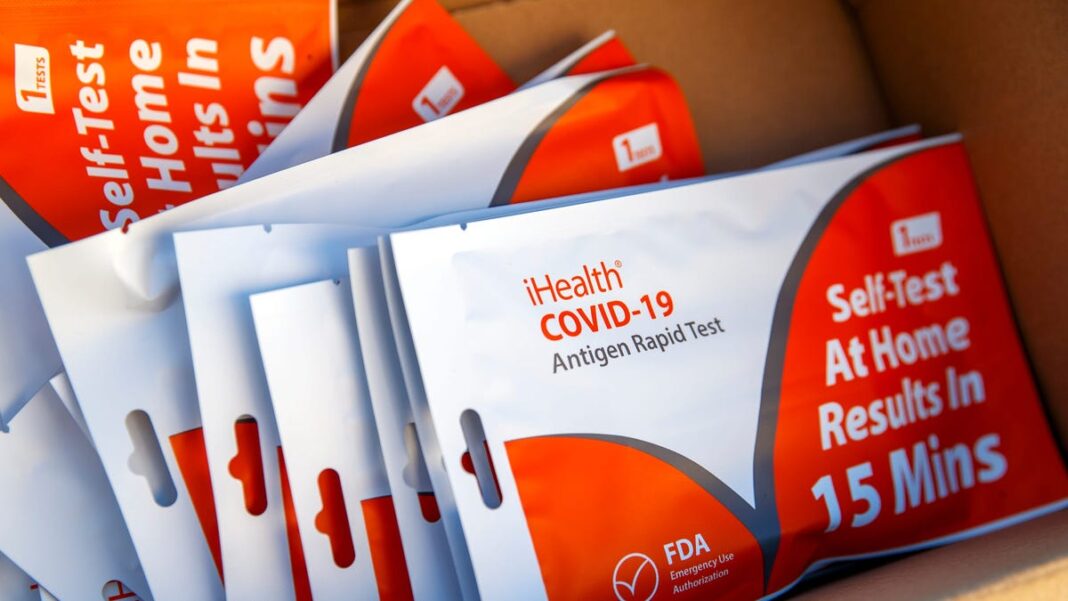Free COVID-19 Tests Available: Here’s How to Get Yours
Families nationwide can now obtain free at-home COVID-19 tests.
As of Thursday, families can receive up to four complimentary COVID-19 tests from the U.S. Department of Health and Human Services (HHS), available as long as supplies last.
This initiative comes following the conclusion of the CDC’s Bridge Access Program, which was designed to ensure that adults without insurance could still access free COVID-19 vaccines through local pharmacies and health centers. This program, covering all major vaccines (BioNTech-Pfizer, Moderna, and Novavax), ended in August 2024.
“Restoring this well-received program is a critical move by the Biden-Harris Administration to make sure that accessible COVID-19 tests are available for anyone who needs them this fall and winter,” stated Dawn O’Connell, HHS assistant secretary for preparedness and response.
This free testing initiative is timely as positive COVID-19 test cases are on the rise, coinciding with increased flu activity anticipated in October.
“Before gathering with family and friends this holiday season, take a moment to test and help protect them from COVID-19,” O’Connell advised.
HHS noted that since the initiative’s launch in winter 2021, the Administration for Strategic Preparedness and Response (ASPR) and USPS have successfully distributed over 900 million tests to American households.
You can order these tests at COVIDTests.gov. For tests that are specially designed for individuals with disabilities, visit ACL.gov/AccessibleTests.
Here’s what you need to know about getting your free COVID-19 tests.
When Can You Get Free COVID-19 Tests?
According to HHS, the free COVID-19 tests are available now and will remain so until the end of the year, with shipping starting on Monday, September 30.
How to Obtain Free COVID-19 Tests?
If you’re looking to get a free COVID-19 test, visit COVIDTest.gov or special.usps.com/testkits to place your order.
Are Tests Available at Pharmacies? Which Ones?
For those in need of at-home tests immediately, they can still be purchased at pharmacies throughout the U.S.
HHS encourages individuals to check with local retailers and pharmacies to find available at-home tests.
Individuals who are uninsured may be able to find low-cost or free tests. To locate a nearby COVID-19 testing site, reach out to a HRSA-funded health center or an ICATT location for assistance with pharmacies.
Is Identification Required to Get COVID-19 Tests?
Must Tests Be Picked Up In-Person or Will They Be Mailed?
The at-home tests will be delivered directly to individuals’ homes across the U.S., and shipping is free.
Improved Access to COVID-19 Tests
HHS has stated that the tests will be more accessible to individuals with disabilities, including enhancements in test technology for those with mobility challenges or vision impairments.
Additionally, HHS is committed to reaching underserved communities across the United States.
“These initiatives are part of ASPR’s ongoing efforts to distribute free COVID-19 tests to long-term care facilities, low-income senior housing, elderly and disability networks, and other community groups assisting older and disabled individuals,” as stated in the HHS release.
HHS also mentioned that “over one billion over-the-counter tests have been distributed so far through this community access program.”
What Should You Do If You Test Positive?
The tests can identify the prevalent COVID-19 variants currently in circulation, as per the CDC.
These at-home tests usually yield results within 30 minutes or less and can be taken by vaccinated or unvaccinated individuals. Many tests now also feature extended expiration dates.
If you receive a positive result, you should adhere to the latest CDC recommendations to prevent the transmission of the virus.
While positive test results are deemed reliable, HHS warns that a negative result may not fully rule out a COVID-19 infection. The U.S. Food and Drug Administration recommends two negative antigen tests for symptomatic individuals or three tests for those who aren’t showing symptoms, spaced 48 hours apart.
Current COVID-19 Situation
The initiative is launching as COVID-19 cases are expected to surge during winter, alongside flu and respiratory viruses (RSV).
While cases were at a high during the summer, they are now declining across the nation.
In the beginning of August, the proportion of positive COVID-19 tests decreased from 17.8% during the week of August 10 to 14.9% for the week of September 7, as reported by the CDC.
Currently, as of this month, the COVID-19 variant KP.3.1.1 is responsible for more than 50% of positive cases in the U.S., according to the latest CDC estimates.
Health experts anticipate an increase in cases around December.
Although past infections or vaccinations may provide some level of immunity, this protection isn’t permanent. The CDC advises that everyone aged 6 months and older should get an updated COVID-19 vaccine, even if they have been vaccinated in the past.
This article has been revised with new updates.

